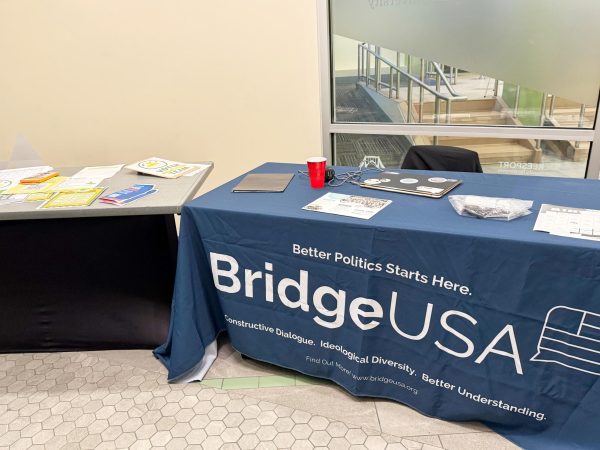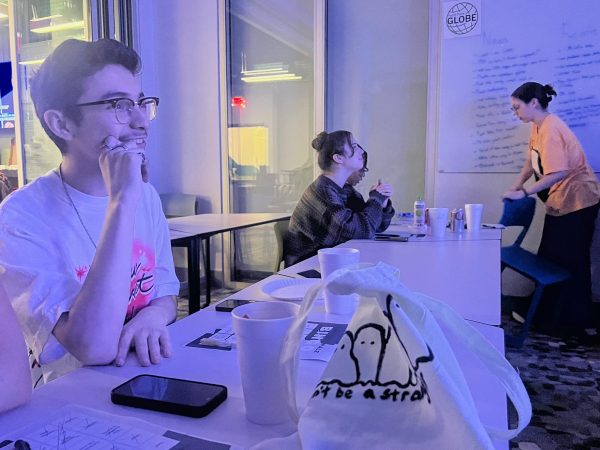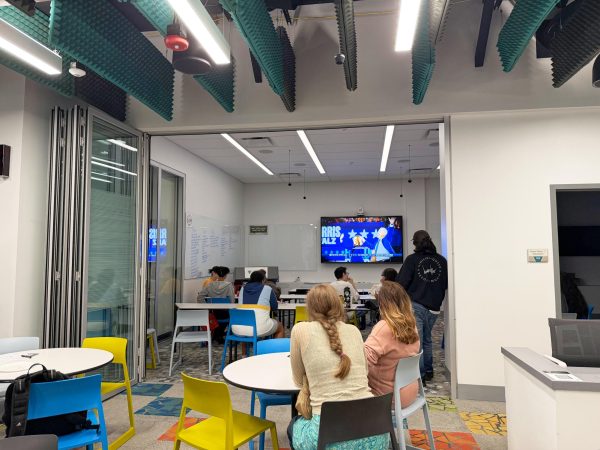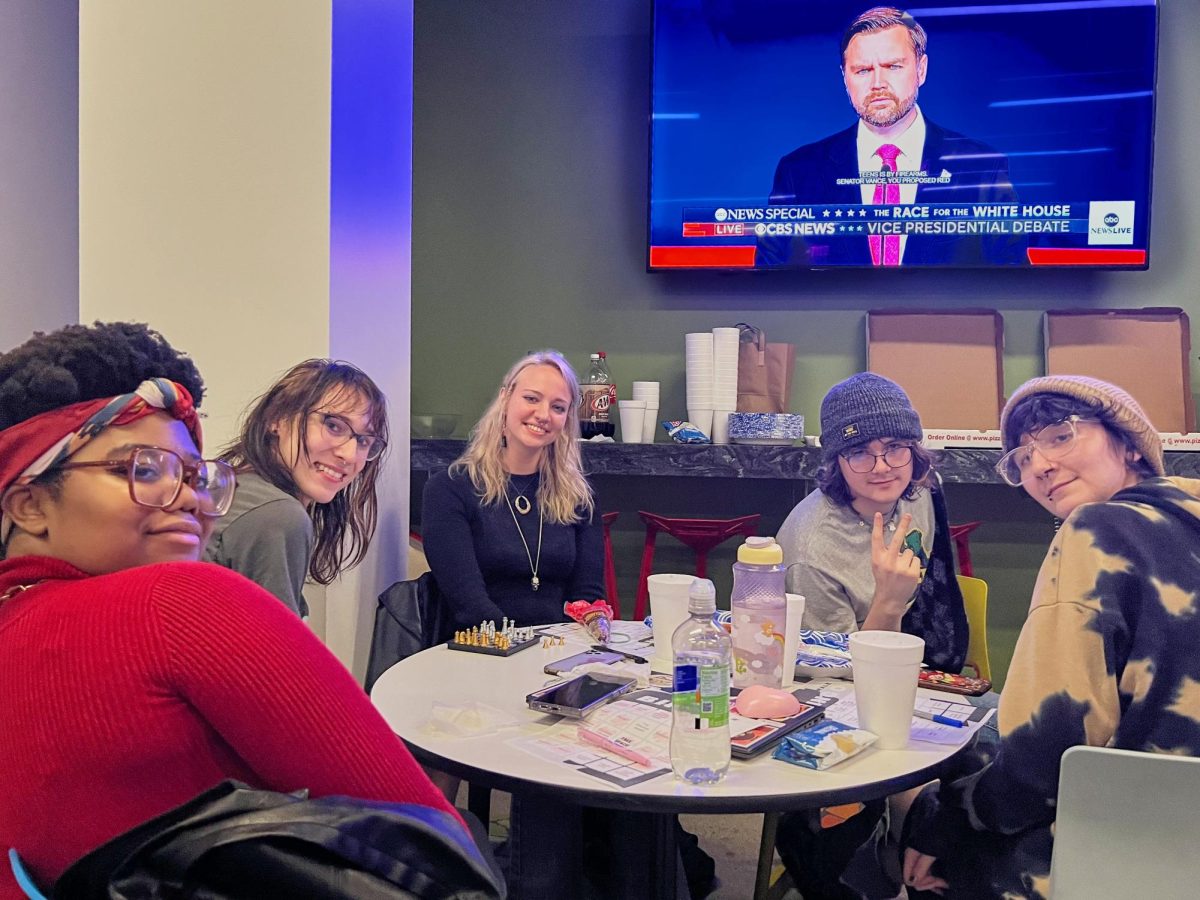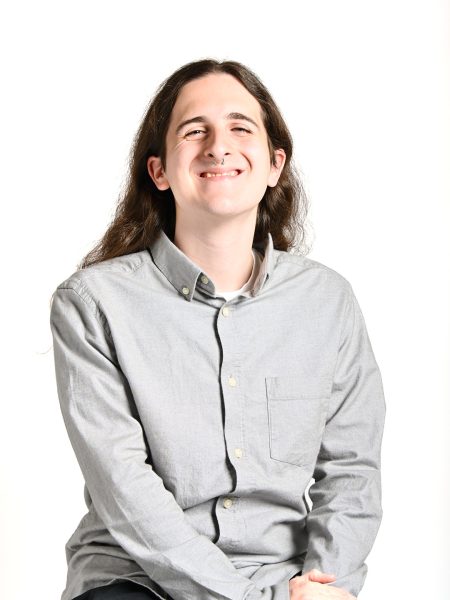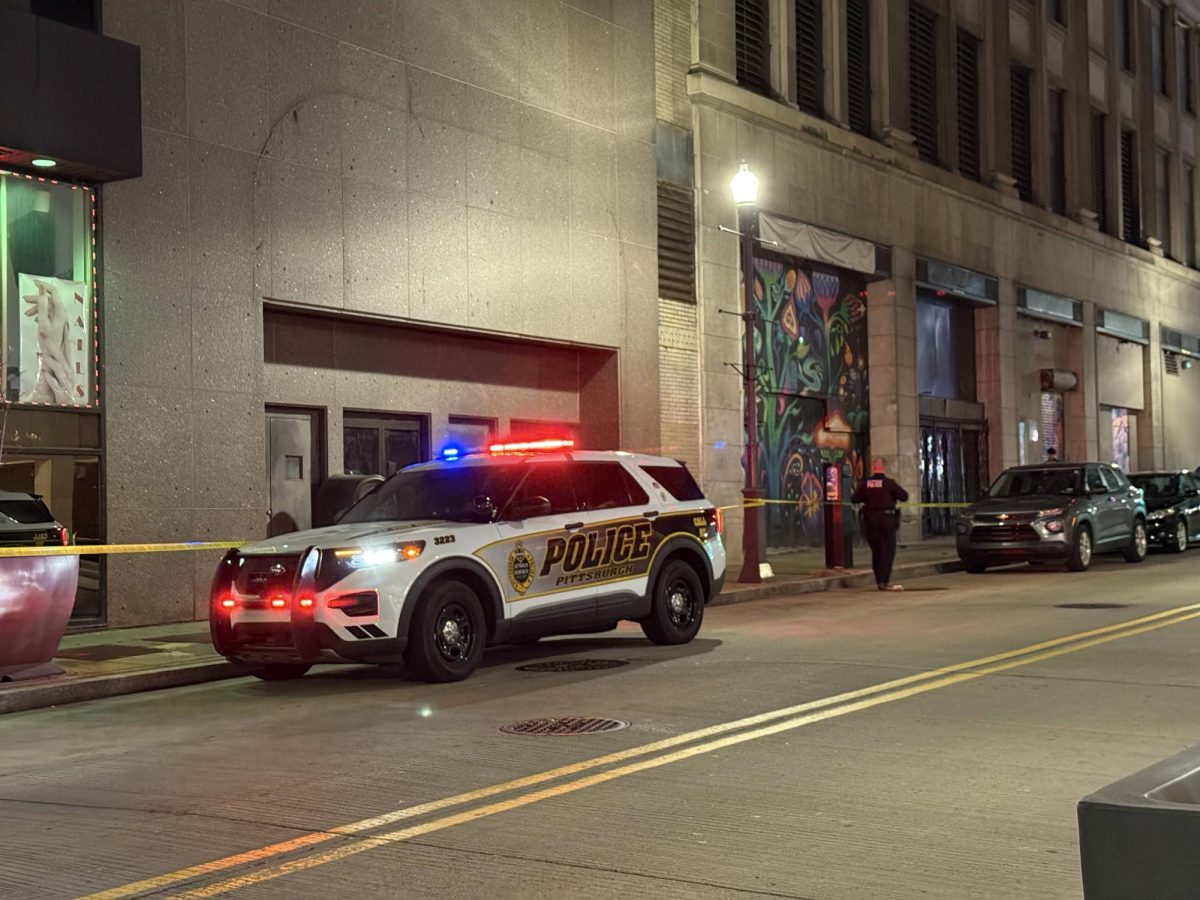Members of the Point Park Political Science Association (PPPSA) and the University’s BridgeUSA chapter held a vice-presidential debate watch party for students to discuss the first and only debate between Senator J.D Vance (R) and Governor Tim Walz (D).
Discussions after the debate lasted close to half an hour, with students bringing up subjects such as what they had hoped to see and hear, the fairness of both debate moderators and what the debate may mean for the Nov. 5 election. According to BridgeUSA’s website, the organization describes itself as a “multi-partisan student movement that champions viewpoint diversity, responsible discourse, and a solution-oriented political culture.”
Topics in the vice-presidential debate included climate change, immigration and reproductive rights. The two vice-presidential hopefuls rarely interrupted each other or the moderators. Both candidates had their microphones muted when tensions arose after a moderator fact-checked a comment made by Vance regarding the legal status of Haitian migrants in Springfield, Ohio.
Both candidates continued to speak, while Margaret Brennan, one of the moderators, explained to Vance and Walz that “the audience can’t hear you because your mics are cut.”
Student opinions on the debate were mixed, ranging from disappointment over a lack of drama to relief that both candidates were respecting each other.
Carsen Brunn, president of the Point Park chapter of BridgeUSA, said that he noticed side conversations happening during the debate because it was “not as entertaining as the previous debate.”
Andres Alaniz, a first-year screenwriting major in attendance, said that he loved the mutual respect both candidates had for each other.
“They had concepts and topics that they had alignment with and had common ideas with, so I’m glad it was a more respectful debate, very clear of what they both thought,” Alaniz said.
He also said that he does not think the debate would change the minds of people who are undecided on who to vote for, but he appreciated how both candidates were firm on their talking points.
Sienna Wraith, a first-year history major who is a member of PPPSA, said that she was not as impressed with either candidate’s performance and hoped to hear more on topics such as student loan forgiveness, the recent rockets fired towards Israel from Lebanon and LGBT issues especially.
Wraith, who says she was undecided on picking a democratic candidate or a third-party candidate for the presidential election, said that the debate did not do much to help those who are already firm on the candidate of their choice.
“As someone who was very unsure about voting for Kamala Harris over a third-party vote, I don’t think it did a lot to sway people who were very set on Kamala or very set on Vance,” Wraith said. “I think it probably did more to help bring on more undecided who may be more leaning right or leaning left, it might have helped them iron out things, but other than that, I don’t think it really helped anyone.”
During the discussion hosted by two political clubs on campus, the topic of fact-checking or the lack thereof generated debate over whether it was effective. The presidential debate had live fact-checking, while the vice-presidential debate broadcast had a QR code on the screen that took those who scanned it to a fact-checking page on what both candidates said.
Kyle MacLaughlin, president of SGA, said that he thought the live fact-checking during the presidential debate was effective.
“I understand some of the concerns because it can kind of cut into some of what they’re saying, but I thought last time it was effective, and making sure there was less of an opportunity to say things that were probably untrue,” MacLaughlin said. “I think some of the controversies about that are interesting, like why would you not want some sort of live-in-the-moment chance for the moderator to say if someone is not saying the truth?”
Riley Mahon, a sophomore political science major who is involved with the Green Party of Allegheny County, says that it is not always possible to do an unbiased fact check.
“There’s an idea that you have to fact-check both sides equally, and that’s only true if both sides are wrong equally, and they’re usually not,” Mahon said. “I was reading an article from CNN where Kamala Harris made one false claim in the debate, and I don’t remember if they fact-checked her on it, but also Donald Trump, that article says something like 20 or 30 false claims in that debate.”
Mahon also used climate change as an example where he says that there can only be one factually correct answer, where there is no such thing as two equal sides to one argument.
Dillion Peterson, vice president of SGA, said that doing both a live fact check along with the given QR code would be best for a political debate.
WTAE also covered the debate watch party. A newscast that included the package with the watch party piece played during the discussion, prompting reactions from students who saw peers that they recognized.
